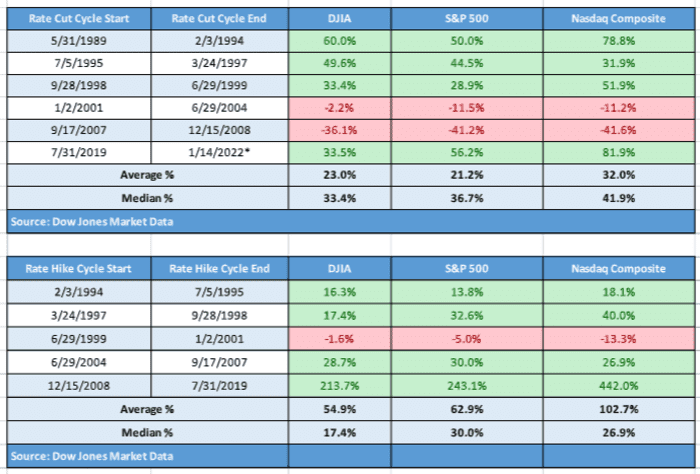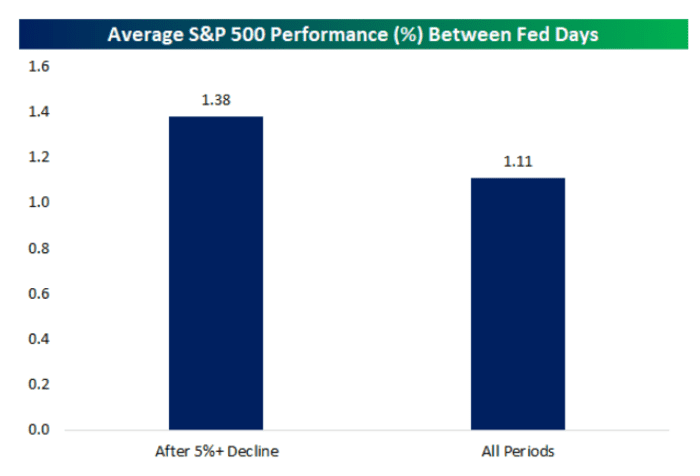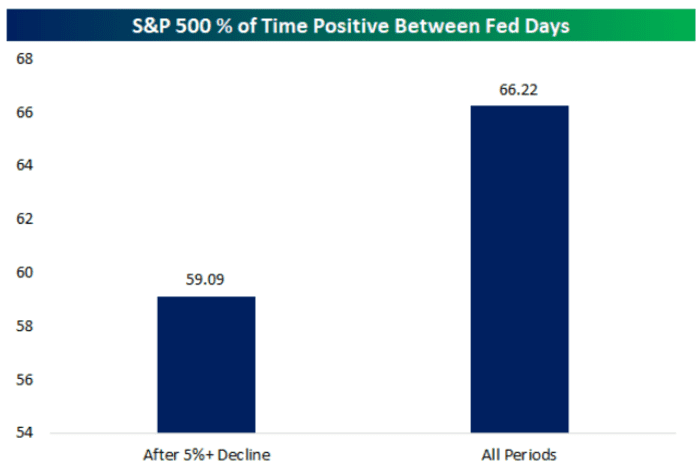Here’s what history says about stock-market returns during Fed rate-hike periods
Bond yields are rising again so far in 2022. The U.S. stock market has been fragile.
One thing feels assured: the days of making easy money are over in the pandemic era. Benchmark interest rates are headed higher and bond yields, which have been anchored at historically low levels, are destined to rise in tandem.
Read: Weekend reads: How to invest amid higher inflation and as interest rates rise
It seemed as if Federal Reserve members couldn’t make that point any clearer recently, as investors await the conclusion of the central bank’s two-day policy gathering.
Recent U.S. consumer-price and producer-price index reports likely have only cemented the market’s expectations of a more aggressive or hawkish monetary policy from the Fed.
See: Stock-market investors can’t count on the ‘Fed put’—why policy makers aren’t seen rushing to rescue
A decision on Wednesday will be announced at 2 p.m. Eastern Time, followed by a news conference with Chair Jerome Powell at 2:30 p.m. Eastern. The only real question may be how many interest-rate increases will the Federal Open Market Committee point to in 2022.
JPMorgan Chase & Co. JPM,
Meanwhile, yields for the 10-year Treasury note TMUBMUSD10Y,
The 2-year note TMUBMUSD02Y,
But do interest rate increases translate into a weaker stock market?
As it turns out, during so-called rate-hike periods, which we seem set to enter into as early as March, the market tends to perform strongly, not poorly.
In fact, during a Fed rate-hike period the average return for the Dow Jones Industrial Average DJIA,

Dow Jones Market Data
Interest-rate cuts tend to occur during periods when the economy is weak and rate hikes when the economy is viewed as too-hot by some measure, which may account for the disparity in stock-market performance during periods when interest-rate reductions occur.
To be sure, it is harder to see the market producing outperformance during a period in which the economy experiences 1970s-style inflation. Right now, it feels unlikely that bullish investors will get a whiff of double-digit returns based on the way stocks are shaping up so far in 2022. The Dow is down 4.9%, the S&P 500 is off 7.4%, while the Nasdaq Composite is down a whopping 11.9% thus far in January, at last check Wednesday.
Another factor to consider is the drawdowns that the market has experienced, leading up to the FOMC policy update, which have helped push the Nasdaq Composite into correction and had put the S&P 500 on the brink of closing there.
The folks at Bespoke Investment Group say, taking a shorter-run look at performance, that based on the past 13 times the S&P 500 has fallen at least 5% between meetings, “the average change in the following period between meetings was a gain of 1.38% while the median is nearly double that at 2.68%.”

The share of times the market gains during those periods, however, is lower, only 59%, compared against 66.22% for all meetings.

—A version of this article was first published on Jan. 15




